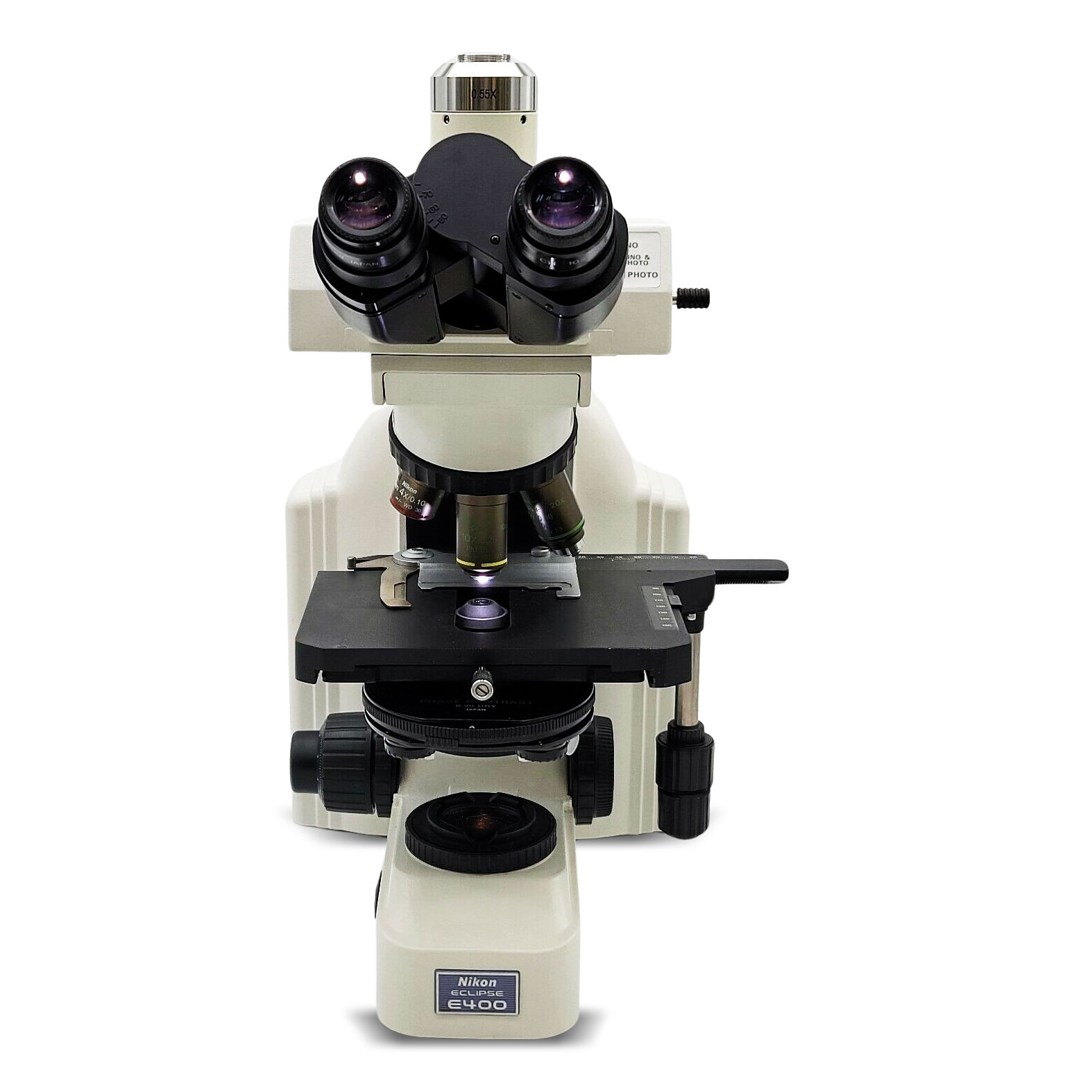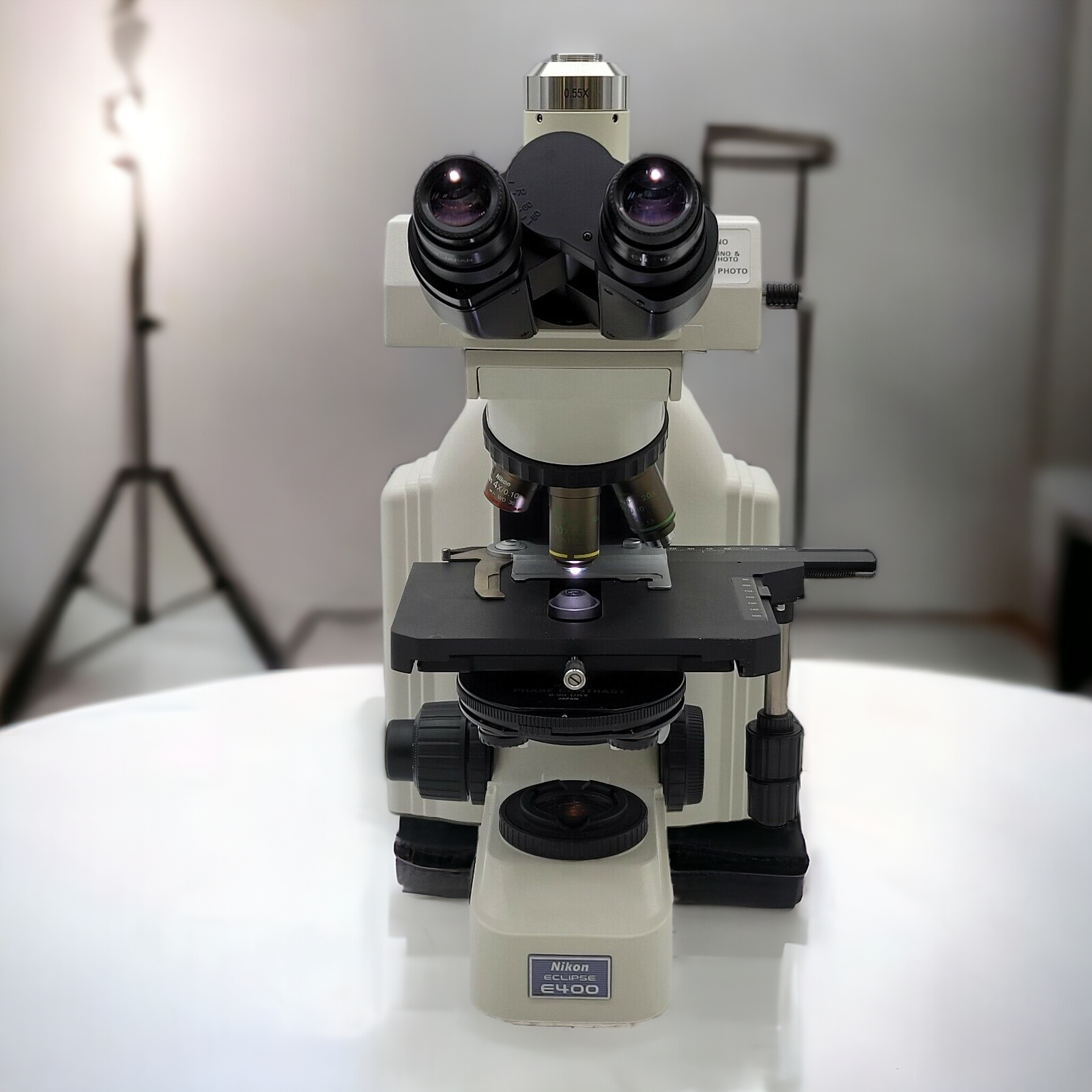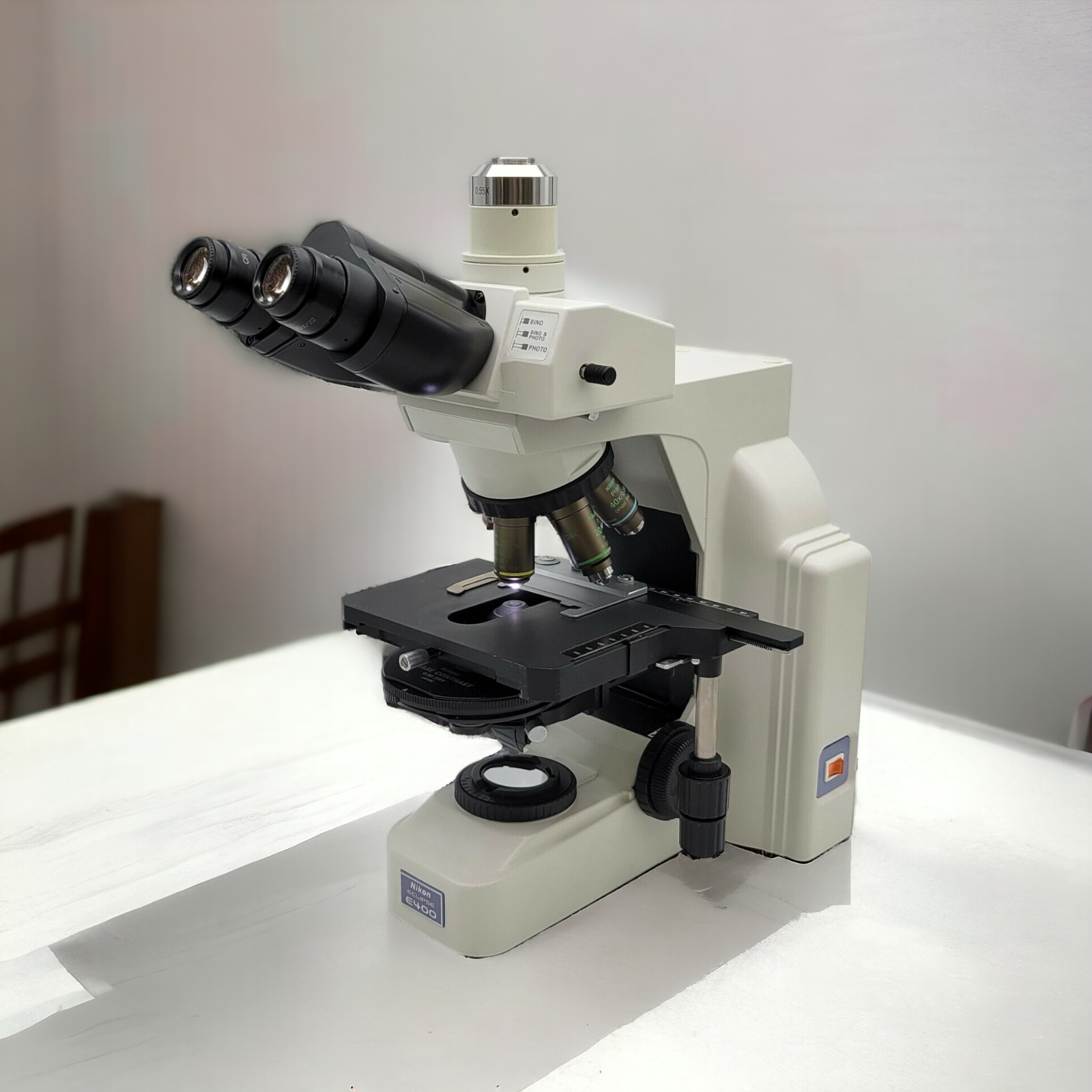Description

Its Purpose:
The Nikon E400 Eclipse Microscope is a versatile and reliable research-grade microscope designed for various applications in the field of biological and biomedical sciences. Here is a brief description of the microscope:
The Nikon E400 Eclipse Microscope is a high-quality microscope known for its exceptional optical performance and ergonomic design. It is widely used in research laboratories and educational institutions for a range of microscopy applications.
Acme’s Summary:
The Nikon E400 Eclipse Microscope is a reliable and versatile tool for biological research, clinical diagnostics, and educational purposes. Its advanced optics, flexible illumination options, ergonomic design, and modularity make it a popular choice among researchers and scientists working in various disciplines.
Top 3 Competitors
- Olympus BX53/BX63 Microscopes
- Leica DM2500/DM3000 Microscopes
- Zeiss Axioskop/Axioplan Microscopes
5 Best Things:
- Optics: The microscope is equipped with high-quality optics that deliver sharp, clear, and detailed images. It utilizes Nikon’s renowned CFI60 infinity-corrected optics, ensuring excellent resolution and contrast.
- Illumination: The E400 Eclipse Microscope offers multiple illumination techniques, including brightfield, darkfield, phase contrast, and fluorescence illumination. These options allow researchers to observe and analyze different types of specimens with enhanced visibility and contrast.
- Ergonomics: The microscope is designed with user comfort in mind. It features adjustable eyepieces, a comfortable viewing angle, and ergonomic controls for easy operation and reduced fatigue during long hours of microscopy work.
- Mechanical Stage: The E400 Eclipse Microscope is equipped with a sturdy mechanical stage that allows precise positioning and manipulation of specimens. The stage provides smooth and controlled movement in both X and Y directions, facilitating accurate specimen scanning and observation.
- Modularity and Accessories: The microscope offers modularity, allowing researchers to customize and expand its capabilities as per their specific requirements. Additional accessories such as fluorescence filter sets, digital cameras, and imaging software can be integrated to enhance imaging and analysis capabilities.

 (4)
(4)










